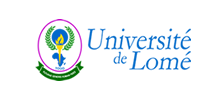Magazine
Effect of non-ventilation during the first 10 d of incubation on physiology, hatching events and post-hatch performances of two commercial layers strains
A. Bilalissi1*, H.T. Meteyake1, O.E. Oke2, H. Lin3, O. Onagbesan2 and K. Tona1
1 Laboratory of Poultry Sciences, Regional of Excellence Centre on Poultry Science, University of Lome, B.P. 1515 Lome, Togo
2 Department of Animal Physiology, Federal University of Agriculture, Abeokuta, Nigeria
3 Department of Animal Science, Shandong Agricultural University, n°61, Daizong Street, 10 Taian, Shandong 271018
*Correspondence: abilalissi18@gmail.com
18 avril 2023
Télécharger VoirEffects of egg weight and breeder age on egg quality, hatching parameters and post-hatch performance of Cherry Valley broiler ducks
N. Dassidi1*, K.A.R. Kowonou2, M. Ayao Dzigbodi2, O. Onagbesan3, T. Kokou2 and H. Lin4
1 Institut National Supérieur des Sciences et Techniques d'Abéché, Chad
2 Centre d’Excellence Régional en Sciences Aviaires (CERSA), Université de Lomé, B.P: 1515 Lome, Togo
3 Federal University of Agriculture, Abeokuta, Animal Physiology Department, Abeokuta, Nigeria
4 Animal eco – nutrition laboratory, Department of Animal Sciences, Poultry eco – Nutrition Research Centre, Shandong Agricultural University Shandong, P.R. China
18 avril 2023
Télécharger VoirEffect of storage duration on the hatching egg quality, embryonic parameters and post-hatch performance of Cherry Valley ducks
N. Dassidi1,2*, O. Moubinou2, Y.A.E. Kouame3, O. Onagbesan4, K. Tona2 and H. Lin5
1 Institut National Supérieur des Sciences et Techniques d'Abéché, B.P:6077, Abéché, Tchad
2 Centre d’Excellence Régional en Sciences Aviaires (CERSA), Université de Lomé. B.P: 1515 Lome, Togo
3 Laboratoire d’Endocrinologie et Biologie de la Reproduction Animale, Université Felix Houphouët Boigny, 01BP V 34 Abidjan 01, Côte d’Ivoire
4 Department of Animal Physiology, Federal University of Agriculture, P.M.B, Abeokuta, Ogun State 2240, Nigeria
5 Animal eco – nutrition laboratory, Department of Animal Sciences, Poultry eco – Nutrition Research Centre, Shandong Agricultural University, Tai’an 271018, Shandong Province, China
18 avril 2023
Télécharger VoirEffect of Mixing ACIDAL® with Drinking Water for Laying Hens on Production Performance
Bouassi T., Ameyapoh Y., Van Hamme V., Anani K., Adjrah Y., Decuypere E., Gbeassor M. and Tona K. (2016) Effect of Mixing ACIDAL® with Drinking Water for Laying Hens on Production Performance. International Journal of Poultry Science, 15: 365-72. DOI: 10.3923/ijps.2016.365.372
15 août 2016
Télécharger VoirEffect of Moringa oleifera Leaf Meal on Growth Performance and Blood Parameters of Egg Type Chicken During Juvenile Growth
Voemesse K., Teteh A., Nideou D., N'nanle O., Gbeassor M., Decuypere E. and Tona K. (2018). Effect of Moringa oleifera Leaf Meal on Growth Performance and Blood Parameters of Egg Type Chicken During Juvenile Growth. International Journal of Poultry Science, 17: 159-159. DOI: 10.3923/ijps.2018.
21 février 2018
Télécharger VoirEffects of Moringa oleifera leave meal in the diet on layer performance, haematological and serum biochemical values
Voemesse K., Teteh A., Nideou D., N'nanle O., Tété-Bénissan A., Oke O.E., Gbeassor M., Decuypere E. and Tona K. (2019). Effects of Moringa oleifera leave meal in the diet on layer performance, haematological and serum biochemical values. European Poultry Science, 83. DOI: 10.1399/eps.2019.263
05 mars 2019
Télécharger VoirEffect of High Temperature During First and Second Halves of Incubation on Layer Chicken Embryo Physiology
Nideou D., N’nanle O., Kouame Y.A.E., Chrysostome C., Gbeassor M., Decuypere E. and Tona K. (2019). Effect of High Temperature During First and Second Halves of Incubation on Layer Chicken Embryo Physiology. International Journal of Poultry Science, 18: 626-633. DOI: 10.3923/ijps.2019.626.633.
21 avril 2019
Télécharger VoirEffect of guinea fowl egg storage duration on embryonic and physiological parameters, and keet juvenile growth
Kouame Y.A., Nideou D., Kouakou K. and Tona K. (2019). Effect of guinea fowl egg storage duration on embryonic and physiological parameters, and keet juvenile growth. Poultry science, 98: 6046-6052. DOI: 10.3382/ps/pez264
21 avril 2019
Télécharger VoirEffects of Dietary Palm Oil on Production Performance and Serum Parameters of Laying Hens
Kolani A., Adjrah Y., Eklou-Lawson M., Teteh A. and Tona K. (2019). Effects of Dietary Palm Oil on Production Performance and Serum Parameters of Laying Hens. International Journal of Poultry Science, 18: 1-6. DOI: 10.3923/ijps.2019.1.6
06 janvier 2019
Télécharger VoirEffect of pawpaw (Carica papaya) seed diets on production performance of boiler breeders and hatching parameter. International Journal of Poultry Science
Nideou D., Nʼnanle O., Kouamé Y.A.E., Voemesse K., Decuypere E., Gbeassor M., Onagbesan O. and Tona K. (2020). Effect of pawpaw (Carica papaya) seed diets on production performance of boiler breeders and hatching parameter. International Journal of Poultry Science, 19: 656-664. DOI: 10.3923/ijps.2020.1.9
09 janvier 2020
Télécharger VoirCharacterization of stakeholders and grilling practices of chicken meat sold in south of Benin Republic
Edikou K.U., Diantom A.J., Oke E.O., Osseyi G.E. and Dossou J. (2019). Characterization of stakeholders and grilling practices of chicken meat sold in south of Benin Republic. International Journal of Biological and Chemical Sciences, 13: 2806-2823. DOI: 10.4314/ijbcs.v13i6.31
15 octobre 2019
Télécharger VoirThe appropriate time to improve day-old chick production and post-hatch growth through Moringa oleifera leaf extract inoculation into the hatching egg
Bilalissi A., N’nanle O., Nideou D., Meteyake H.T., Kouame Y.A.E., Decuypere E., Gbeassor M., Onagbessan O. and Tona K. (2019). The appropriate time to improve day-old chick production and post-hatch growth through Moringa oleifera leaf extract inoculation into the hatching egg. European Poultry Science, 83. DOI: 10.1399/eps.2019.286
15 octobre 2019
Télécharger Voir
